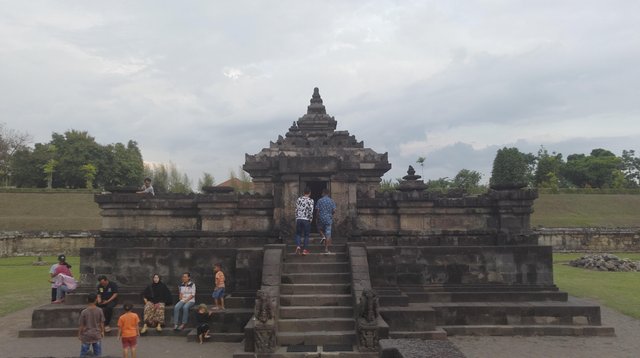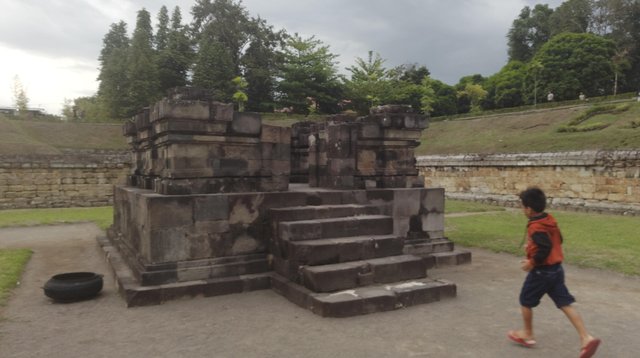History of Sambisari Temple

Hello steemian, good night. On this occasion, I would like to mention the historical sights / buildings I have visited. You're curious, just right.
Who does not know the name of the temple, for the Indonesian people; Candir is one of the places of worship for the ancestors / ancestors who once lived. Temples in Indonesia are very much famous, such as Borobudur Temple or Prambanan Temple for example. However, do you know there is also a name Sambisari temple?
Sambisari temple is one of the heritage of the Hindu era. According to the information I got from the local community, this temple was built in the 10th century. It was built by the Syailendra dynasty precisely during the reign of Rakai Garung. Maybe for those of you who come from outside will be very confused with the names, but for the people of Indonesia; those names are our ancestors.
In the beginning, this temple was accidentally discovered by a farmer in 1966 when he dug up a field. This temple is estimated to be buried by volcanic material from the eruption of Merapi in 1006. Then, an excavation is done by the Yogyakarta Archaeological Center which not only finds the temple building but also other artifacts. Artifacts found on excavation sites are jewelry, ceramics and gold inscriptions. Excavations continued with the reconstruction of the temple. It took 21 years to reconstruct the temple again.
Oya, for the location of the temple is located in Sambisari Village, Purwomartani Village, Kalasan Subdistrict, Sleman Regency, Yogyakarta. The location is about 10 Km from the city of Yogyakarta, or about 5 km west of Prambanan Temple. If Prambanan Temple you would already know is not it? Clear.
If you are there what to see and do? Obviously, upon arrival at the location for the first time you may wonder why there is no temple there. But after moving forward, you will be able to see a clear view of the temple area. The reason why you can not see the temple is because the location of the temple is located underground. This temple is about 6.5 meters underground. Therefore, people often refer to this temple as an underground temple.



So, this site consists of one main temple and three temples that accompany it in front of the main. The temple is surrounded by two layers of walls made of white stone in total area of ± 50 × 47 m, not as large as the Borobudur temple or Prambanan Temple. But you need to know, that the estimated total area of this site is much larger than can be seen now. However, archaeologists say that the temple can not be dug again because of the height of the land. It is feared that if they dig further the temple will be flooded with water from the river in the west during the rainy season.
Entering the main temple, you will see the makara statue supported by two dwarf stars. Inside the main temple there is also a statue of the phallus - yoni which is a worship for Shiva. The main temple located outside the wall has three niches on each side. The niches are filled with statues, the recesses on the north side have the statue of the Goddess Durga, the eastern side has a statue of Ganesha and the south side has a statue of Agastya.


Anyway if you come here, I make sure you will not regret it. Why? Because in addition you can enjoy the sights, you can also learn the history of the buildings of old. Especially if you are one of the students archaeologists or architecture, make sure a lot of science that you will get here.
So for my discussion this time, hopefully useful and interesting for you.
Congratulations @riko! You have received a personal award!
Click on the badge to view your Board of Honor.
Do not miss the last post from @steemitboard:
SteemitBoard World Cup Contest - The results, the winners and the prizes